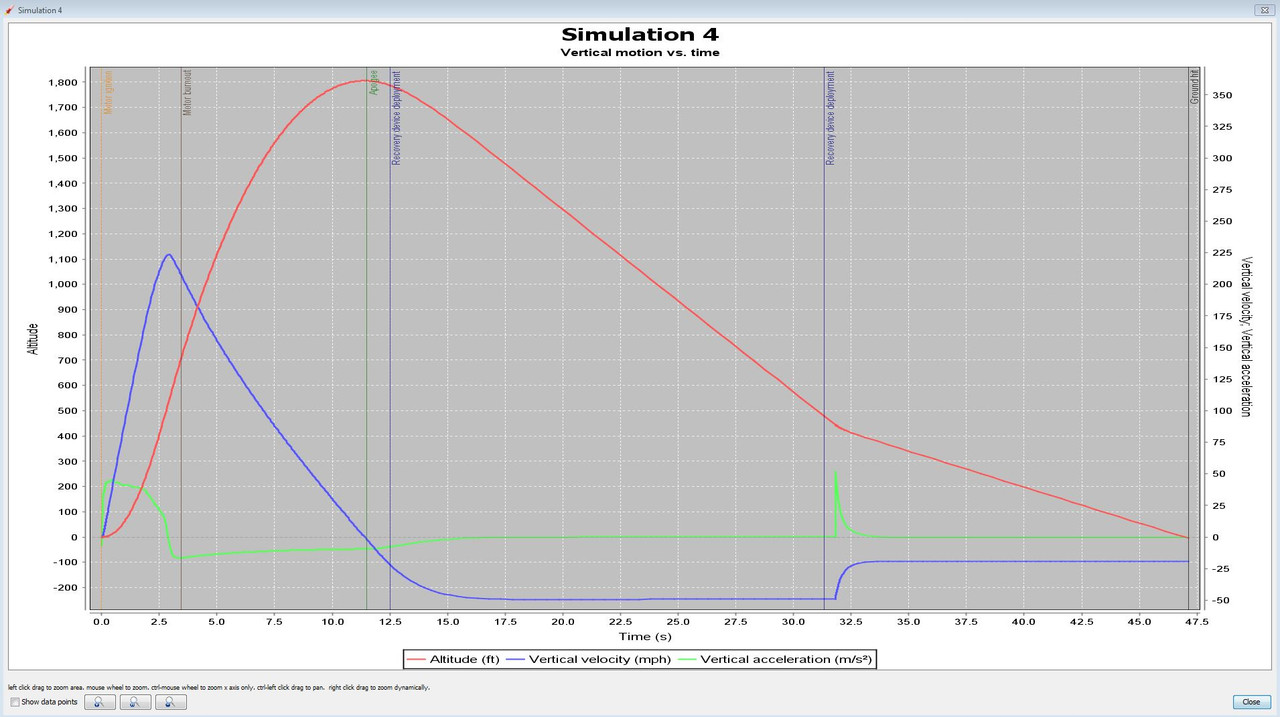Curtis Enlow
Well-Known Member
This is the sim profile I get in OpenRocket for my stretched High-Power/Dual Deploy LOC Super IV using an AT I154J-10A into a 38mm RMS 720 case w/spacers.
Please feel free to comment on any red flags, issues or confirmation of the motor choice/profile (to calm my Newbie anxiety!) for the flight profile before I order.
(Also, what does the 'A' stand for on the delay? I can't find any info on the designation)

Please feel free to comment on any red flags, issues or confirmation of the motor choice/profile (to calm my Newbie anxiety!) for the flight profile before I order.
(Also, what does the 'A' stand for on the delay? I can't find any info on the designation)




